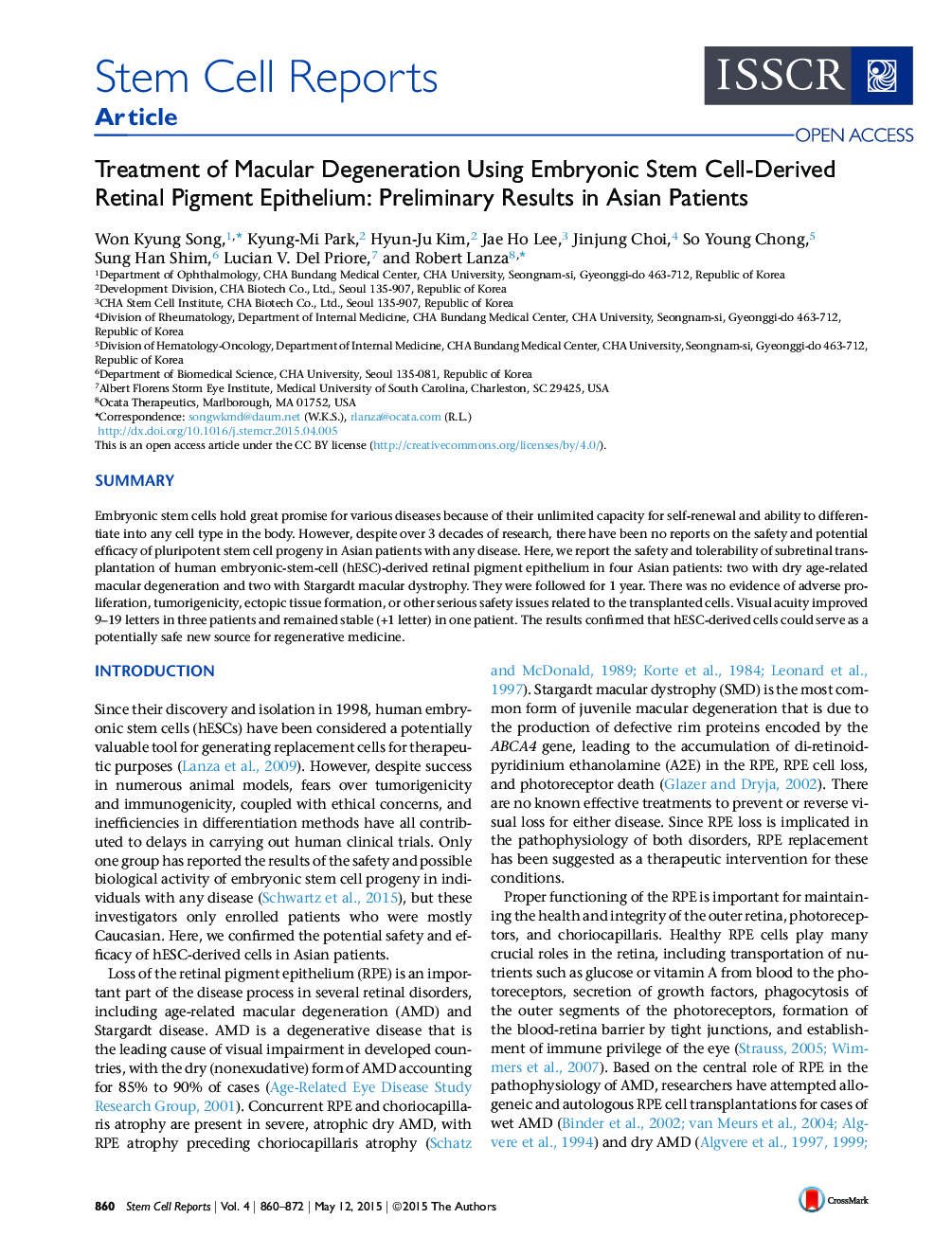| Article ID | Journal | Published Year | Pages | File Type |
|---|---|---|---|---|
| 2093577 | Stem Cell Reports | 2015 | 13 Pages |
•Human embryonic-stem-cell-derived retinal pigment epithelial cells were transplanted•Patches of increasing pigmentations were observed after transplantation of the cells•Visual function stabilized or improved in all of these macular degeneration patients•There were no serious adverse events associated with the cells up to 1 year
SummaryEmbryonic stem cells hold great promise for various diseases because of their unlimited capacity for self-renewal and ability to differentiate into any cell type in the body. However, despite over 3 decades of research, there have been no reports on the safety and potential efficacy of pluripotent stem cell progeny in Asian patients with any disease. Here, we report the safety and tolerability of subretinal transplantation of human embryonic-stem-cell (hESC)-derived retinal pigment epithelium in four Asian patients: two with dry age-related macular degeneration and two with Stargardt macular dystrophy. They were followed for 1 year. There was no evidence of adverse proliferation, tumorigenicity, ectopic tissue formation, or other serious safety issues related to the transplanted cells. Visual acuity improved 9–19 letters in three patients and remained stable (+1 letter) in one patient. The results confirmed that hESC-derived cells could serve as a potentially safe new source for regenerative medicine.
